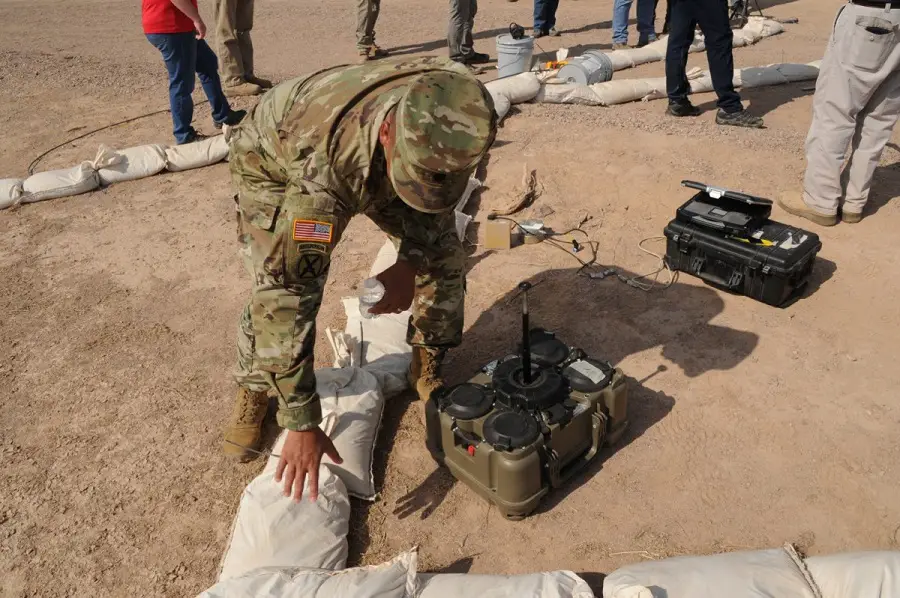A Textron business segment will manufacture anti-tank munition systems and spare parts for the U.S. Army under a five-year 4 million contract. The XM204 is part of a new generation of terrain shaping obstacles able to target and deter tracked vehicles operated by a near-peer adversary in open terrain. This eliminates the old method of hand emplacing land mines. The XM204 development program scheduled a system requirements review combined with a system functional review in early April 2020. Textron Systems will deliver XM204 top attack trainers and XM98 wide area target munitions to the service branch. The U.S. Army Contracting Command received one bid for the firm-fixed-price contract through an online solicitation.
The size of a large suitcase, the launcher module bears four top attack munitions that, when triggered, launches a top attack submunition into the air. The submunition tracks and identifies threat vehicles and then fires an armor-piercing slug at the target. The ruggedized launcher module has a mechanism to indicate whether the system is armed or not. It also has a self-destruct switch with different timed settings to prevent the possibility of the system lying dormant and dangerous years or decades after the end of a conflict. The munition will enhance the Soldiers’ ability to shape the terrain with the construction of complex obstacles.

The system requirements review is a formal review between the prime contractor and the government to ensure a complete and mutual understanding of system requirements. The system requirements review ensures that the XM204 Top Attack system can proceed into initial systems development and that all system and performance requirements are defined and testable, are consistent with cost, schedule, risk, technology readiness and other system constraints. The system functional review is a technical review to ensure that the system’s functional baseline is established and can satisfy the requirements within the currently allocated budget and schedule. These reviews typically occur before technologies have matured, in an effort to complete a preliminary design.
The U.S. is notably not a signatory to the Ottawa Treaty, which came into force in 1999 and is focused on the elimination of anti-personnel mines, specifically. There are 164 signatories to that deal to date. It is worth noting that this agreement does not cover anti-tank mines, or dual-purpose anti-tank and anti-personnel mines, as well as any mines that can be employed in a mode where they are remotely triggered, such as the M18A1 Claymore.
President Barack Obama had instituted restrictions that prohibited any use of anti-personnel mines outside of the Korean Peninsula. President Donald Trump’s administration had relaxed those rules in January 2020.
















